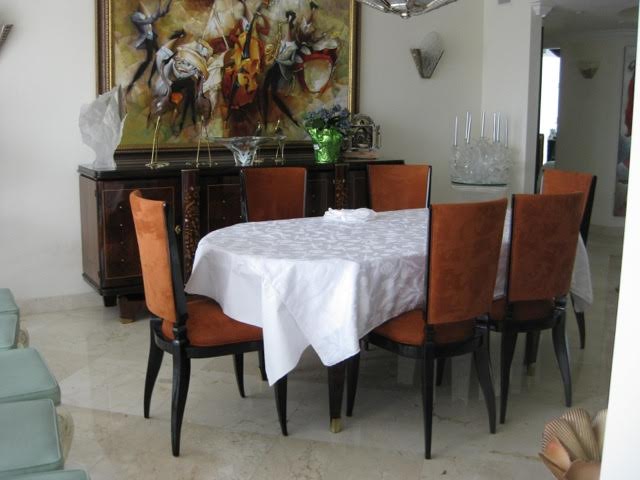The Secret to Perfect Vintage Furniture Restoration
Furniture isn't just furniture. There's a world of difference, for example, between an assemble-it-yourself table covered in thin veneer and a hand-carved mahogany with walnut inlay and brass finishings.
If you are an Art Deco or Mid-century Modern enthusiast, you'll know the pleasure of finding a well-cared-for piece at a garage sale, in a pawn shop or even at a store like ours. Maybe you've found a piece that's almost perfect and just needs a little TLC to restore it to its former glory.

A note before we discuss restoring furniture - it's a great feeling, to bring a piece to life. We know, because we're the professionals at this. We absolutely encourage people to take on projects like this, but please, if you are at all concerned that you may not be able to do it right, take it to a professional.
Also, if there's any chance at all this could be a valuable antique, get professional advice before restoring it. The last thing you want is to remove defining marks by accident!
A clean sweep
Step one in restoring old furniture is cleaning it. You can't really see what needs to be done until it's clean and you can see all the scratches, dings and rough edges. For just about all materials, you can get started with warm, soapy water and a soft cloth.
Take it slowly and don't drown your piece. Old wood and leather that has lost its protective finish can easily swell and get ruined by too much water, so go gently and dry it thoroughly and quickly as soon as a section is clean.
Also avoid using abrasive sponges or cleaning products. These can do even more damage.
Top Tip: Sticky residue could be dirt, or it could be the varnish that's degraded. If there's a lot of stickiness, switch to a solvent-based cleaner like naphtha or mineral spirits to avoid damaging the wood beneath.

The fix - wood
Hopefully, there aren't any missing parts in your piece, but if there are, you are welcome to try searching for replacements. However, it's highly unlikely you will find original pieces and you might need to have them custom made.
In the meantime, if there are any screws or nails holding parts together, check if they need to be replaced, or if a good tightening will do the job. Broken dowels can either be replaced or repaired using pins, nails or glue, depending on how strong the join needs to be.
If a piece is very wobbly or rickety, it might need more than a few screws tightened. If you suspect it might need taking apart and reglueing, be very sure you can handle the job, or take it to a professional.

The fix - metal
If the piece has metal parts, check to make sure they aren't rusted through. Significant rusting could cause a lot of problems later on. Rusted screws and nails can be quite easily replaced, but a rusted bedframe is a whole other story.
For minor rust damage, careful sanding can remove it, followed by treatment with rust inhibitors. If the entire piece of furniture is made of metal, there are various options for removing rust, including a variety of chemicals. If there are other materials, however, be careful with chemical treatments.
The fix - glass
Broken glass, sadly, usually needs replacing. Yes, it is possible to repair a crack with glue, but the structural integrity is severely compromised and there's always a good chance that the glue will perish and the glass will unexpectedly fall out.
Our honest advice when it comes to glass is to try and find an original replacement, or have a replacement piece custom made. If this sounds like a last resort to you, then in this case consult a professional for glass repair. We mean it - it's too easy to hurt yourself on broken glass!
The finish

Once your repairs are complete, if your finish or varnish is still in good condition, our advice is to leave it alone and give it a good polishing or waxing to bring out the luster. Whichever you choose, though, stick to it. Mixing wax and polish on a wooden surface can cause cloudiness.
If it has cracks, chips or is peeling, it's time to get out the sandpaper and elbow grease and get to work removing it. You can start with a chemical remover, but make sure you get advice on the right kind to use on your piece.
Before getting it down to raw wood, consider what finish you're going to use. You may need a clear lacquer, or a wood stain. Do some research into what the original finish would have been and try to replicate that as closely as possible - that way, it will have an authentic look.
For metal furniture, apply a good dose of anti-rust. Just make sure all the rust is gone first! You can then decide whether to paint it or go for a shiny metal look.
Final Note: We are really serious when we say, by all means, go for it and try and restore that piece. But, if you are stuck at any point, don't try to guess it out. Ask a professional for advice.
- Matthew Pillet







Comments 0